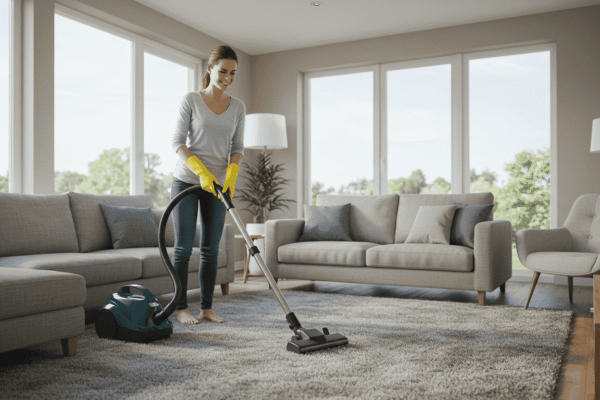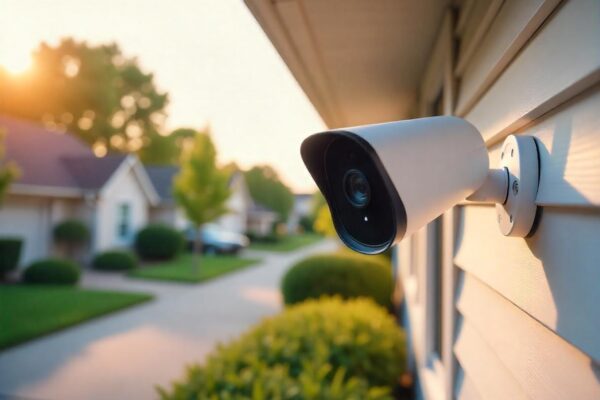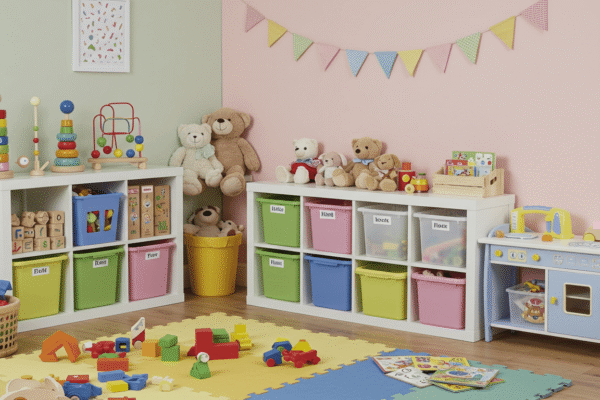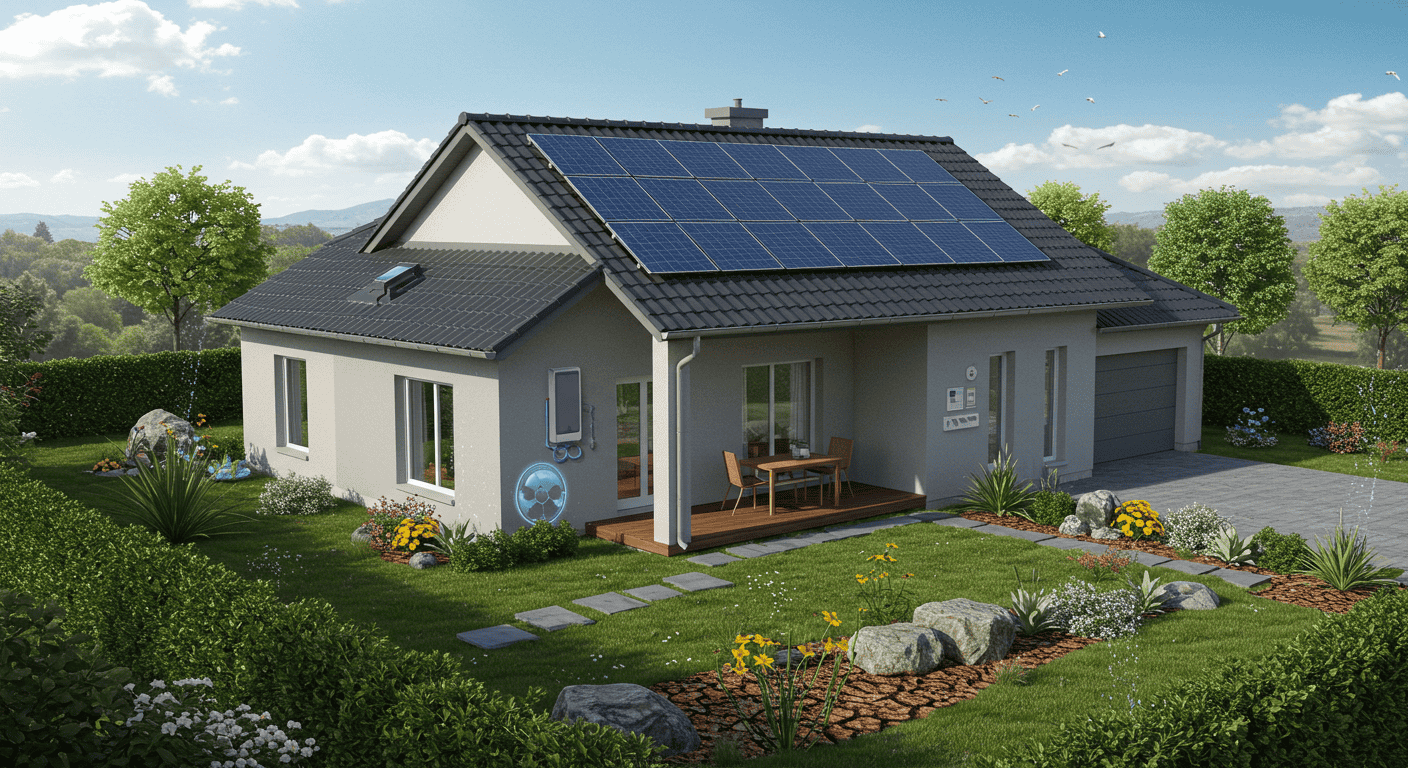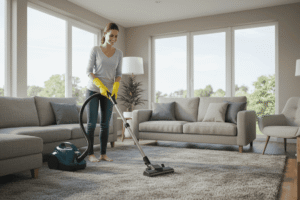Adapting homes to climate change is no longer a distant consideration—it’s a necessity for every homeowner. As extreme weather events, rising temperatures, and unpredictable rainfall become more frequent, making your home climate-resilient and energy-efficient is essential. This guide explores practical home adaptation strategies, from sustainable home design and energy-efficient upgrades to flood prevention and indoor environmental quality, helping you protect your property while creating a comfortable, safe, and future-ready living space.
Understanding Climate Change and Its Impact on Homes
Adapting homes to climate change begins with understanding how environmental shifts are affecting the places we live. Changes in weather patterns are not only impacting ecosystems but also putting our homes at risk. By learning about the trends in climate and the potential threats to residential properties, homeowners can implement effective home adaptation strategies to protect their investments, improve comfort, and reduce long-term repair costs. Awareness of these challenges is the first step toward creating climate-resilient homes that withstand the growing threats posed by global climate change.
How Weather Patterns Are Changing
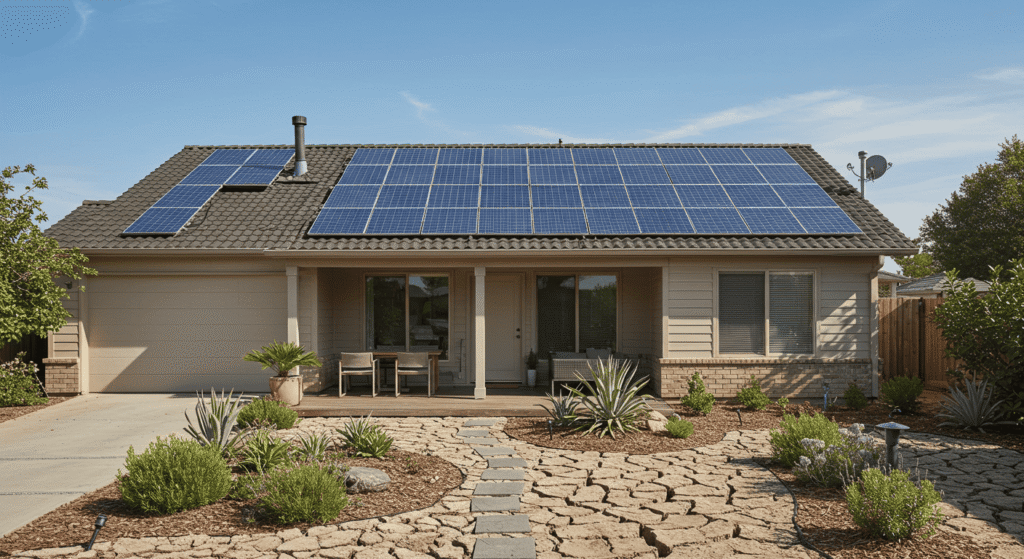
Over the past decades, scientists have observed significant shifts in weather patterns. Rising temperatures are increasing the frequency and intensity of heatwaves, while extreme storms are becoming more common and severe. Rainfall is also becoming unpredictable, with some regions experiencing prolonged droughts and others facing sudden, heavy downpours. These changes not only affect outdoor environments but also create unique challenges for maintaining safe and comfortable living spaces. Understanding these patterns helps homeowners anticipate risks and plan appropriate sustainable home design measures, including insulation upgrades, ventilation strategies, and energy-efficient cooling systems.
Risks to Homes From Extreme Weather
Extreme weather events can have serious consequences for homes. Flooding can damage basements and foundations, while heatwaves can stress roofs and HVAC systems. Storms may compromise windows, roofs, and exterior structures, and fluctuating humidity can encourage mold growth and weaken building materials. Each of these risks requires tailored home adaptation strategies to minimize damage, maintain indoor comfort, and ensure long-term resilience. Proactive measures can prevent costly repairs and enhance safety, while also contributing to a more energy-efficient and climate-resilient home.
| Climate Risk | Home Vulnerability | Immediate Action | Long-Term Solution |
|---|---|---|---|
| Flooding | Basement & foundation | Move valuables, seal doors | Elevate home, install drainage |
| Heatwave | Roof, HVAC | Shade windows, fans | Roof insulation, energy-efficient cooling |
| Storms | Windows & roof | Secure loose items | Impact-resistant design, reinforced structure |
Energy-Efficient Home Adaptations
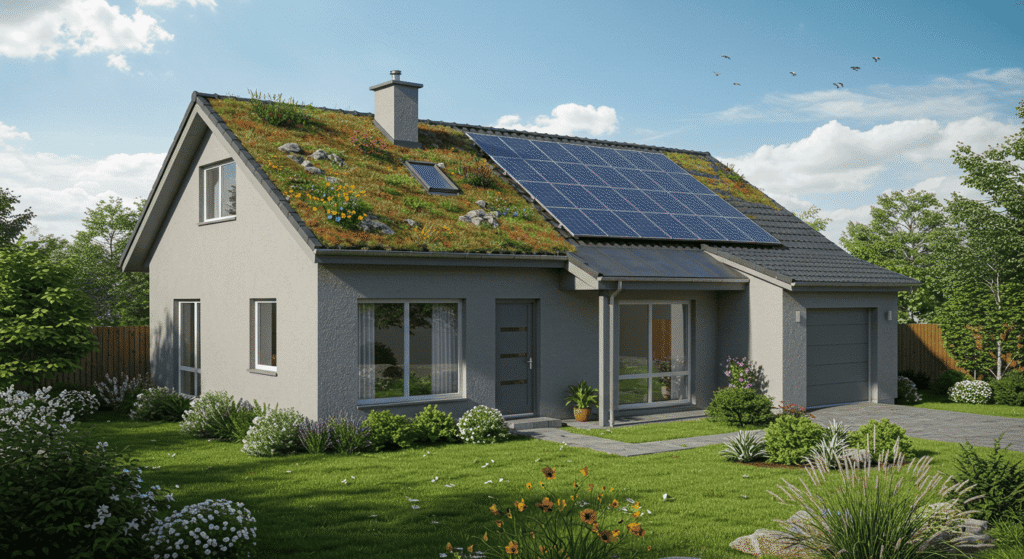
Implementing energy-efficient home adaptations is one of the most effective ways to make your home more climate-resilient. These upgrades not only reduce energy consumption and utility costs but also enhance indoor comfort, making your home better prepared for the challenges of climate change. From insulation improvements to ventilation upgrades, there are practical steps every homeowner can take to ensure their property remains safe, efficient, and comfortable year-round.
Insulation and Weatherproofing Tips
Proper insulation is essential for maintaining a stable indoor temperature while reducing energy use. Adding wall and attic insulation helps keep your home cooler in the summer and warmer in the winter, creating a more comfortable living environment while lowering heating and cooling costs. Weatherproofing doors and windows also prevents drafts and energy loss, protecting the home from fluctuating outdoor conditions. Together, these measures form a core part of any sustainable home design aimed at adapting to climate change.
Smart Ventilation and Cooling Strategies
Efficient ventilation is critical to controlling indoor temperature and humidity, especially during extreme weather events. Upgrading your ventilation system or using smart airflow solutions can reduce heat buildup and moisture accumulation, preventing mold and maintaining air quality. Combining these strategies with energy-efficient cooling solutions ensures your home remains comfortable without placing excessive demand on energy resources, aligning with broader home adaptation strategies for climate resilience.
| Upgrade | Energy Savings | Comfort Improvement | Estimated Lifespan |
|---|---|---|---|
| Wall/Attic insulation | High | Keeps home cooler/warm | 20+ years |
| Sealed windows & doors | Medium | Reduces drafts | 15 years |
| Ventilation system upgrade | Medium | Reduces humidity & heat | 10–15 years |
Water Management and Flood Prevention
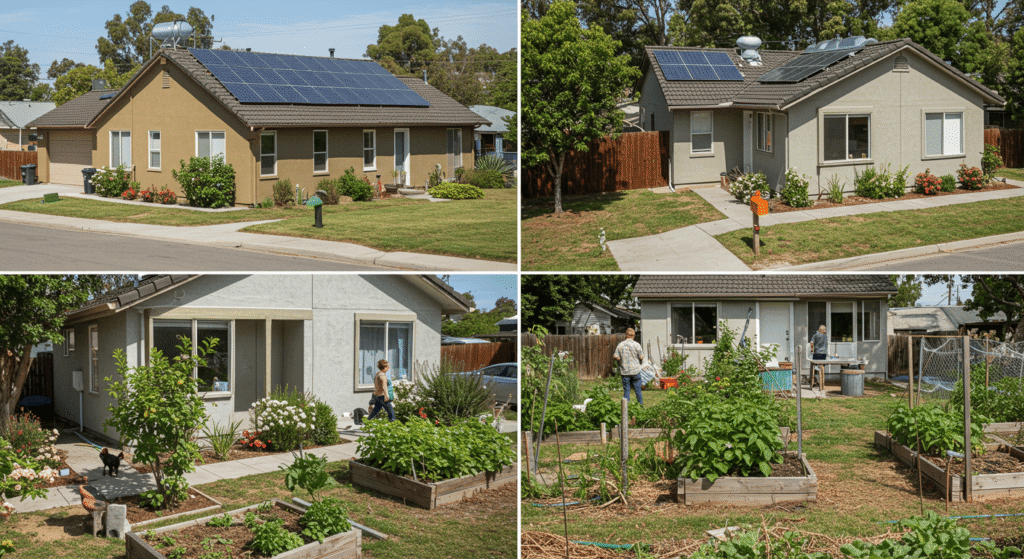
Effective water management and flood prevention are essential aspects of adapting homes to climate change. As rainfall becomes more unpredictable and severe storms more frequent, managing water around your property helps prevent damage to foundations, landscaping, and interior spaces. Implementing strategic solutions can protect your home, conserve water, and maintain a healthy living environment.
Rainwater Harvesting & Storage
One of the most practical home adaptation strategies is rainwater harvesting. Collecting rainwater through storage systems allows you to use this resource for irrigation, cleaning, or other non-potable purposes. This not only reduces strain on municipal water supplies but also mitigates flooding by capturing excess rain during heavy storms. Properly designed storage systems ensure that rainwater is efficiently collected and easily accessible when needed.
Drainage and Landscaping for Water Flow
Proper drainage and landscaping help direct excess water away from your home, reducing the risk of flooding and soil erosion. Designing slopes, channels, and swales ensures that water moves safely away from foundations and sensitive areas. Incorporating permeable surfaces and green spaces further enhances water absorption, preventing water from pooling and minimizing surface runoff.
Permeable Surfaces and Green Spaces
Using permeable surfaces, such as porous pavements, and adding green spaces like lawns or gardens, allows water to naturally infiltrate the soil rather than accumulate on hard surfaces. These measures are not only environmentally friendly but also enhance the resilience of your property against climate-related water damage.
| Technique | Purpose | Maintenance Level |
|---|---|---|
| Rain gardens | Absorb rainwater | Low |
| Permeable pavements | Reduce runoff | Medium |
| Elevated planting beds | Protect plants from flooding | Low |
Heat and Cold Adaptation Solutions
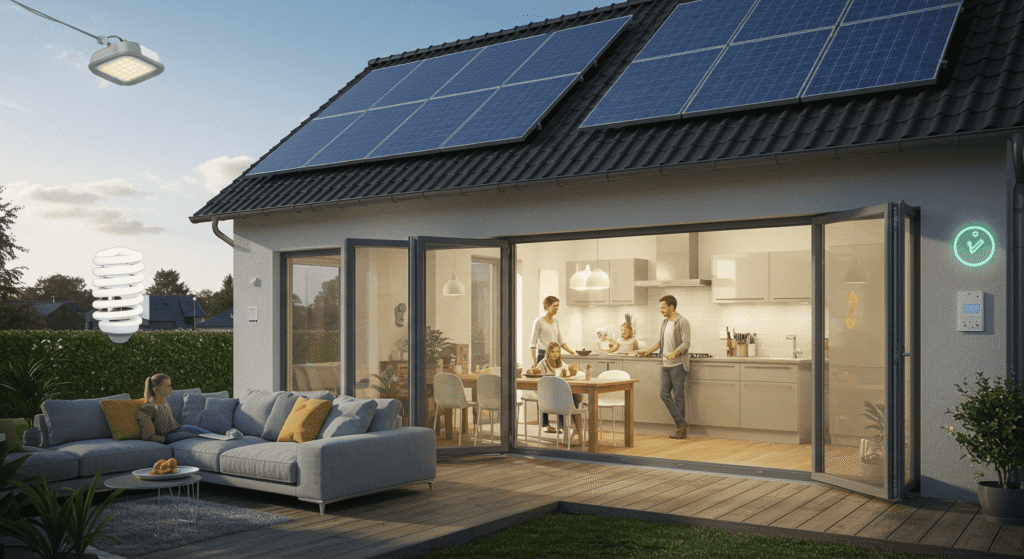
Addressing temperature extremes is a critical part of adapting homes to climate change. Effective heat and cold adaptation solutions improve indoor comfort, reduce energy consumption, and enhance the resilience of your home against rising heatwaves and colder winters. By combining smart design strategies and energy-efficient home adaptations, homeowners can maintain stable temperatures throughout the year.
Passive Cooling and Heating Methods
Passive cooling and heating methods are techniques that regulate indoor temperatures without relying heavily on electricity or mechanical systems. Simple measures, such as using shading devices, natural ventilation, and thermal mass, can significantly reduce indoor heat during summer while retaining warmth in winter. These strategies form a key part of sustainable home design and contribute to long-term energy savings.
Using Thermal Mass and Insulation Smartly
Integrating thermal mass—materials that absorb, store, and release heat—can help stabilize indoor temperatures. Floors, walls, and ceilings made of high thermal mass materials absorb heat during the day and release it when temperatures drop. Coupled with proper insulation, this approach prevents energy loss and maintains a comfortable indoor climate. Smart insulation and thermal mass usage are essential home adaptation strategies for extreme climates.
Home Orientation and Window Placement Tips
The orientation of your home and strategic window placement can maximize natural cooling and heating. South-facing windows can capture winter sunlight, while properly shaded windows prevent overheating during summer. These design considerations, combined with passive ventilation, enhance energy efficiency and contribute to the creation of a climate-resilient home.
| Technique | Summer Benefit | Winter Benefit |
|---|---|---|
| Shaded windows | Reduces overheating | Minor impact |
| Thermal mass floors/walls | Keeps interior cool | Retains warmth |
| Roof ventilation | Reduces heat buildup | N/A |
Renewable Energy and Sustainability at Home
Integrating renewable energy and sustainability at home is a vital component of adapting homes to climate change. Using clean energy sources reduces reliance on the grid, lowers energy costs, and enhances your home’s resilience during extreme weather events. By incorporating renewable solutions and energy storage, homeowners can create a climate-resilient and energy-efficient home that supports long-term sustainability.
Solar Energy Integration
Solar energy integration allows homeowners to harness sunlight to generate electricity for daily use. By converting solar power into usable energy, you reduce dependency on external energy sources and ensure consistent power during outages or peak demand periods. Incorporating solar systems is a practical home adaptation strategy that supports both environmental sustainability and energy security.
Home Battery & Energy Storage Basics
Combining battery storage with renewable energy allows you to store excess power for use when energy demand is high or during power interruptions. This ensures a steady supply of electricity and adds an extra layer of resilience against climate-related energy disruptions. Implementing energy storage solutions is a key step in creating climate-smart homes capable of handling unpredictable conditions.
Long-Term Cost and Resilience Benefits
Investing in renewable energy and storage solutions not only provides immediate energy savings but also improves long-term resilience. Over time, these systems can reduce utility bills, protect against rising energy costs, and enhance the overall durability of your home in the face of climate change. Prioritizing sustainable home design measures ensures both financial and environmental benefits.
| Energy Type | Implementation Effort | Climate Adaptation Benefit | Maintenance Level |
|---|---|---|---|
| Solar panels | Medium | Reduces grid dependency | Low |
| Wind turbines | High | Generates electricity | Medium |
| Battery storage | Medium | Emergency backup power | Medium |
Structural and Material Upgrades for Resilience
Ensuring your home can withstand extreme weather requires thoughtful structural and material upgrades. These improvements are essential for adapting homes to climate change, as they strengthen the building’s core and increase long-term durability. From foundations to roofs, selecting the right materials and reinforcement strategies helps create a climate-resilient home that remains safe, efficient, and comfortable in all conditions.
Roof, Walls, and Foundation Enhancements
Strengthening your roof, walls, and foundation is crucial for protecting your home against storms, heavy rainfall, and temperature extremes. Reinforcing the roof structure, sealing wall joints, and ensuring foundations are properly waterproofed can prevent major damage during extreme weather events. Implementing these upgrades is a key home adaptation strategy that safeguards both property and occupants.
Using Heat & Moisture Resistant Materials
Choosing heat and moisture resistant materials improves durability and reduces maintenance costs over time. Materials that resist warping, cracking, or moisture-related decay help your home withstand harsh weather while maintaining energy efficiency. Incorporating these materials is a core component of sustainable home design and contributes to long-term resilience.
Tips for Retrofit vs. New Construction
When upgrading a home, consider whether retrofit solutions or new construction are more appropriate. Retrofits can reinforce existing structures with improved materials and insulation, while new construction allows for optimal design, orientation, and material selection from the start. Both approaches benefit from applying climate-smart building practices tailored to specific environmental risks.
| Material Type | Heat Resistance | Moisture Resistance | Lifespan |
|---|---|---|---|
| Concrete | High | High | 50+ yrs |
| Treated wood | Medium | Medium | 30 yrs |
| Natural stone | High | High | 100+ yrs |
Indoor Environmental Quality and Health
Maintaining indoor environmental quality and health is a critical aspect of adapting homes to climate change. Extreme weather and fluctuating temperatures can affect indoor air quality, humidity, and overall comfort. By focusing on ventilation, moisture control, and thoughtful home layout, homeowners can create safe, comfortable, and climate-resilient homes that promote well-being.
Air Quality Monitoring and Ventilation
Proper air quality monitoring and ventilation are essential to maintain a healthy indoor environment. Regularly checking air quality, particularly levels of carbon dioxide and pollutants, ensures that your home remains safe even during heatwaves or periods of high outdoor pollution. Efficient ventilation strategies, including passive airflow design and strategic window placement, help reduce indoor pollutants and maintain a comfortable temperature, forming a key part of home adaptation strategies.
Moisture Control and Mold Prevention
Excess humidity and moisture can lead to mold growth, structural damage, and compromised indoor air quality. Controlling moisture through dehumidifiers, proper insulation, and efficient ventilation is crucial for climate-resilient homes. These measures not only protect your property but also improve health outcomes and reduce maintenance costs over time.
Furniture and Layout Considerations for Comfort
The arrangement of furniture and the use of open spaces can influence air circulation and temperature regulation. Positioning furniture to allow airflow, keeping vents unobstructed, and using layouts that maximize natural light and ventilation are practical home adaptation strategies that enhance comfort while supporting energy efficiency.
| Factor | Recommended Range | Adaptation Tip |
|---|---|---|
| Humidity | 40–60% | Use ventilation/dehumidifier |
| Temperature | 18–25°C | Insulate, passive design |
| Air quality (CO2) | <1000 ppm | Improve ventilation |
Creating a Long-Term Home Adaptation Plan
Developing a long-term home adaptation plan is essential for effectively adapting homes to climate change. By taking a strategic approach, homeowners can prioritize improvements, ensure ongoing maintenance, and integrate their homes into broader community and policy initiatives. A well-structured plan helps protect property, reduce costs, and maintain comfort and safety over time.
Prioritizing Upgrades Based on Risk and Budget
Not all upgrades are equally urgent or cost-effective. Evaluating home adaptation strategies based on risk exposure and budget allows homeowners to focus on the most critical improvements first. High-risk areas, such as roofing and water management systems, should be addressed before lower-risk upgrades. This approach ensures that resources are allocated efficiently while maximizing the home’s resilience to extreme weather and climate-related challenges.
Regular Maintenance and Monitoring
Ongoing maintenance and monitoring are key components of a climate-resilient home. Regularly inspecting insulation, drainage systems, and ventilation ensures that adaptations continue to function effectively. Proactive maintenance prevents small issues from becoming costly repairs and supports long-term energy efficiency and comfort.
Community and Policy Considerations
Homes do not exist in isolation. Engaging with local community initiatives and staying informed about relevant policies can enhance home adaptation strategies. Local guidelines on flood prevention, energy efficiency, and climate-smart building practices provide valuable resources for planning upgrades and can sometimes offer financial or technical support.
| Task | Priority | Timeframe | Notes |
|---|---|---|---|
| Inspect roof & walls | High | Yearly | Address leaks promptly |
| Upgrade insulation | Medium | 2–3 yrs | Focus on attic & walls |
| Water management setup | High | 1–2 yrs | Rain gardens & storage |
Conclusion – Building Climate Resilience by Adapting Homes to Climate Change
Adapting homes to climate change is no longer optional but a vital step toward safety, comfort, and sustainability. By combining energy-efficient upgrades, water and heat management, and structural resilience, homeowners can future-proof their living spaces while enhancing long-term value. Small changes, when planned strategically, create lasting impact—ensuring your home is not just a shelter but a sustainable, resilient haven in an uncertain climate future.




